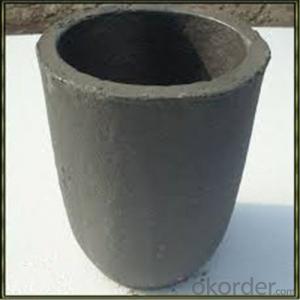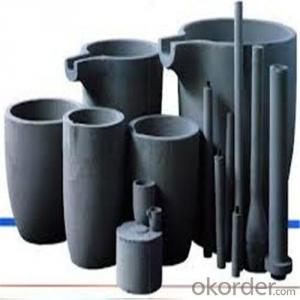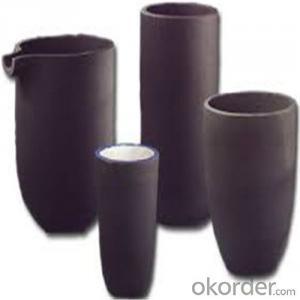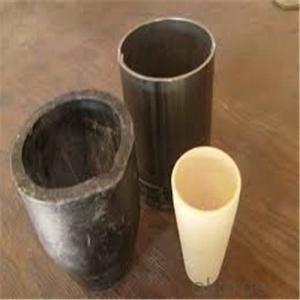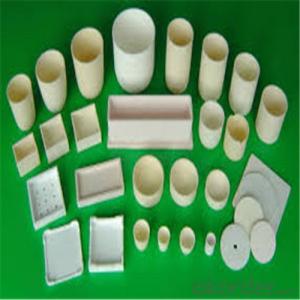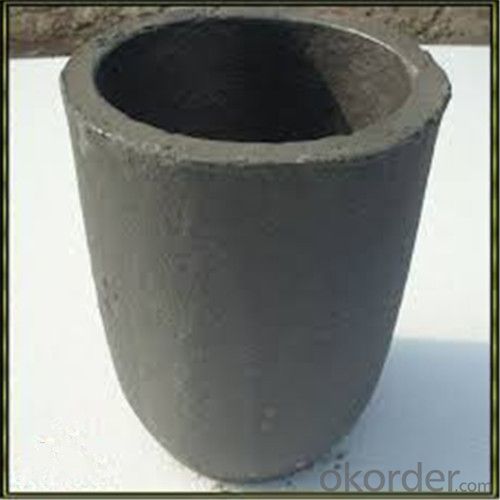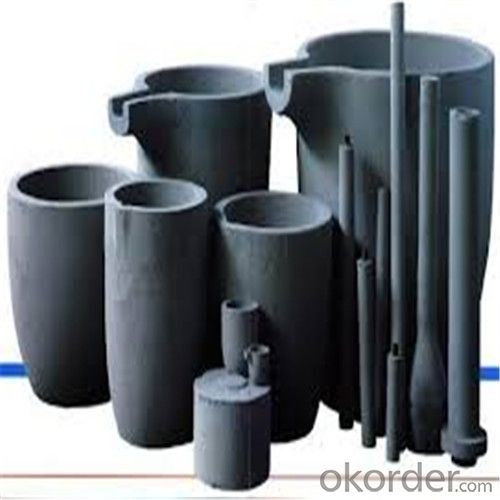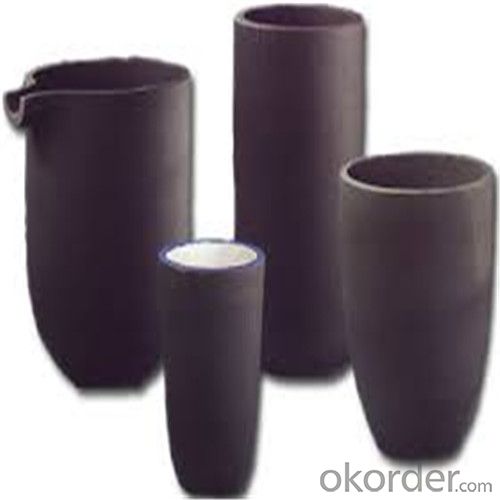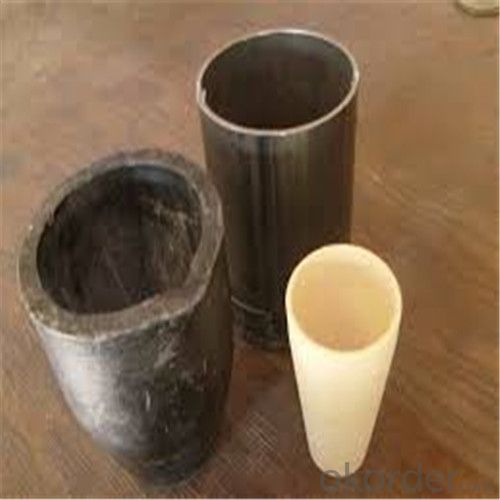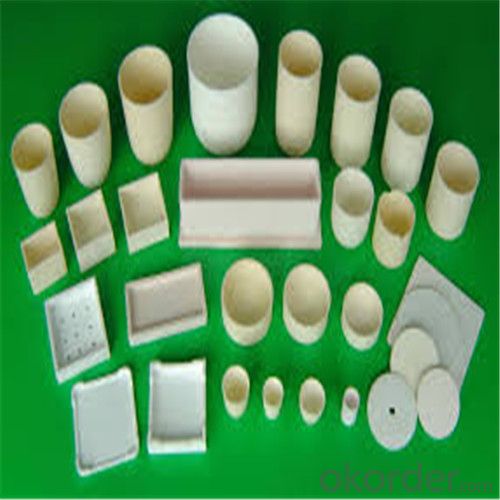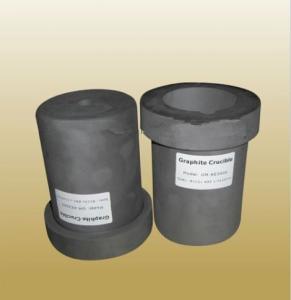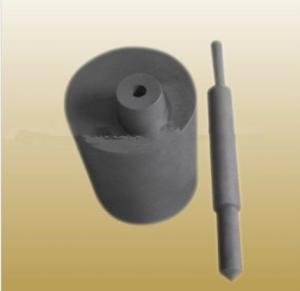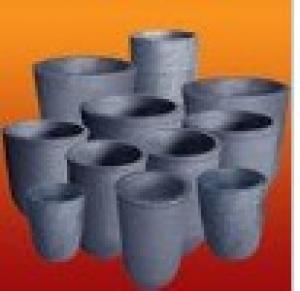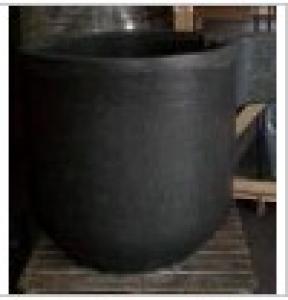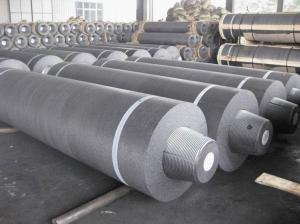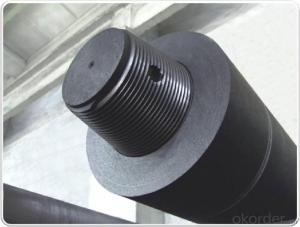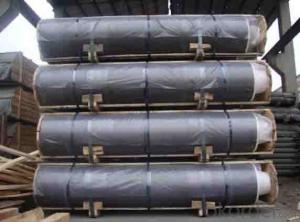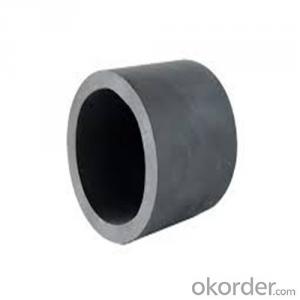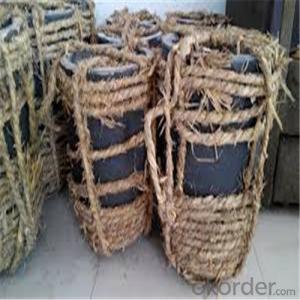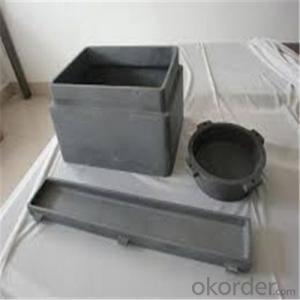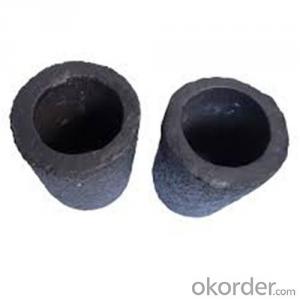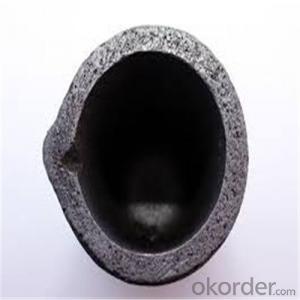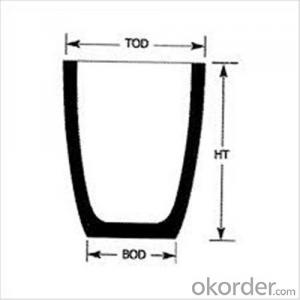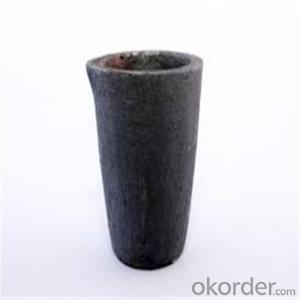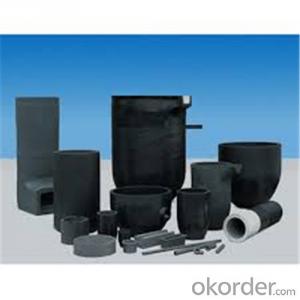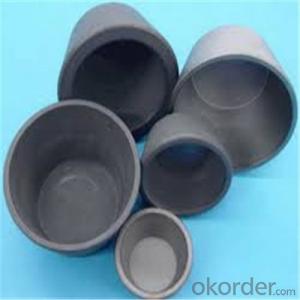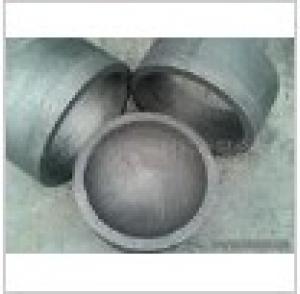High-Quality Crucible Graphite Metallurgy SIC Crucibles
- Loading Port:
- Shanghai
- Payment Terms:
- TT OR LC
- Min Order Qty:
- 1 pc
- Supply Capability:
- 1000 pc/month
OKorder Service Pledge
OKorder Financial Service
You Might Also Like
Quick Details for SiC Graphite Crucibles For Melting Aluminium And Copper, Brass
| Type: | High Strength, graphite crucible crucible | Application: | melting metal | Height: | as your requirements |
| Composition: | High Pure | Top Diameter: | 10-600mm | Bottom Diameter: | 10-1000mm |
| Place of Origin: | China (Mainland) | Brand Name: | Model Number: | ||
| Color: | Black grey | Si3N4%: | 5min | Fe2O3%: | 0.7max |
| C%: | 30-45 | Apparent porosity: | 30max | Refractoriness: | 1680 |
| Bulk Density: | 1.71min | Using life: | >5000 hours | MAX temperature: | 1600c |
Packaging & Delivery
| Packaging Details: | Seaworty packing or as per customer's detail requirement of graphite crucible. |
| Delivery Detail: | within 20-30 days after confirm order of graphite cru |
SiC Graphite Crucibles For Melting Aluminium And Copper, Brass
Product Description
Specifications for Graphite Silicon Carbide Crucible For Aluminum Melting :
1.Long working lifetime: its working lifetime is increased 3-5 times over normal clay-crucible due to the compact body formed under high pressure.
2.High thermal conductivity: high-density body and low apparent porosity greatly improve its heat conductivity.
3.New-style materials: new heat conduction material ensures faster heat conductivity and pollution-free product, reduces adherent slag.
4.Resistance to corrosion:better anti-corrosion than normal clay-crucible.
5.Resistance to oxidation: advanced process dramatically improves its oxidation resistance, which ensures persistent heat conductivity and long working lifetime.
6.High-strength: high-density body and logical structure make the product better compression property.
7.Eco-friendly: energy-efficient and pollution-free, not only ensure metal product purity, but also ensure sustainable development on environment.
8.Multi-function: Can be used in induction graphite crucible furnace
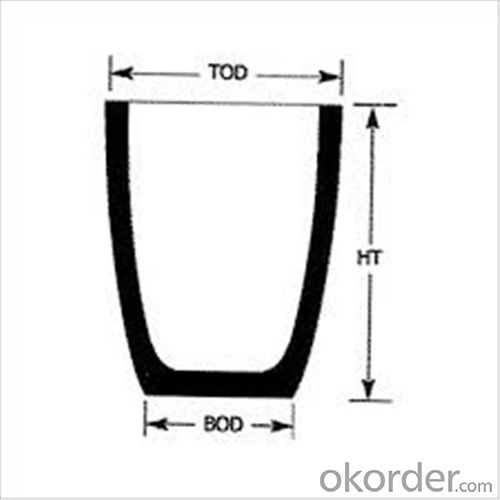
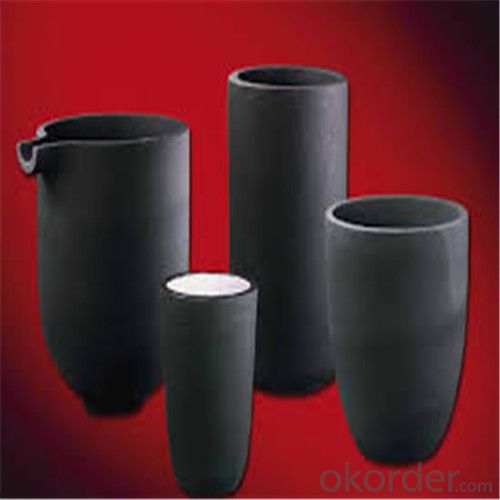
Physicochemical Properties of graphite crucible:
The crucible is an utensil or melting tank vessels that is made of refractory material (such as clay, graphite, quartz or difficult molten metal iron, etc.).
Graphite crucible, with is special advantages and Plasticity, is widely used in the smelting area, e.g. gold smelting, silver smelting, aluminum smelting, cooper smelting, etc.
high pure graphite | ||||
Item | Unit | baked twice | baked three time | baked four times |
impregnated once | impregnated twice | impregnated three times | ||
grain size | mm | ≤325μm | ≤325μm | ≤325μm |
Bulk density | g/cm3 | ≥1.68 | ≥1.78 | ≥1.85 |
Specific resistance | μΩ.m | ≤14 | ≤14 | ≤13 |
Bending strength | MPa | ≥25 | ≥40 | ≥45 |
Compressive strength | MPa | ≥50 | ≥60 | ≥65 |
Ash content | % | ≤0.15 | ≤0.1 | ≤0.05 |
Fine-grain Specialty Graphite FXG-1 | Fine-grain Specialty Graphite FXG-2 | ||||
Item | Unit | Guarantee value | Typical value | Guarantee value | Typical value |
Max grain size | mm | 0.8 | 0.8 | 0.8 | 0.8 |
Bulk density | g/cm3 | ≥1.70 | 1.73 | ≥1.73 | 1.76 |
Specific resistance | μΩ.m | ≤8.5 | 7.5 | ≤8.0 | 7 |
Bending strength | MPa | ≥10.0 | 11 | ≥12.0 | 12.5 |
Compressive strength | MPa | ≥24.0 | 27 | ≥31.0 | 34 |
Thermal Condcutivity | W/(m.k) | ≥120 | 150 | ≥130 | 160 |
C.T.E.(100-600) °C | 10-6/°C | ≤2.5 | 2.2 | ≤2.5 | 2.1 |
Ash content | % | ≤0.3 | 0.09 | ≤0.3 | 0.09 |
NO | Top diameter | Bottom diameter | Height | Tolerance | Capacity(Kg5%) |
2 | 90 | 50 | 55 | 2 | 0.3 |
3 | 105 | 80 | 93 | 2 | 0.5 |
4 | 102 | 80 | 100 | 2 | 0.6 |
5 | 112 | 82 | 130 | 2 | 0.8 |
6 | 120 | 82 | 141 | 2 | 0.9 |
8 | 138 | 90 | 153 | 2 | 1.2 |
12 | 148 | 100 | 181 | 2 | 1.8 |
16 | 156 | 110 | 190 | 2 | 2.3 |
20 | 180 | 120 | 230 | 2 | 3 |
25 | 186 | 128 | 248 | 2 | 3.7 |
Packaging & Shipping
Package: Wooden case and wooden pallet or pack as customer's requirement of graphite crucible.
Delivery time: depend on distance, usually 20 days to 50days after deposit of graphite crucible.
Our Services
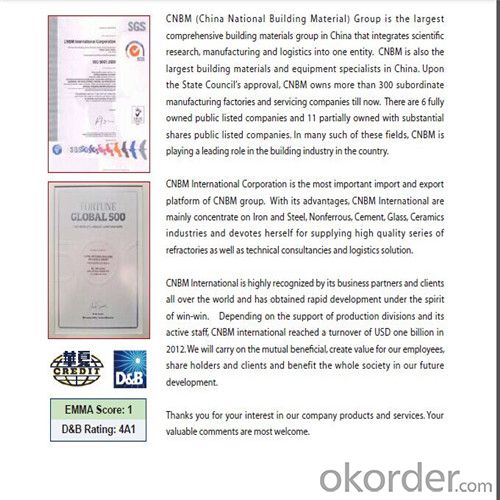
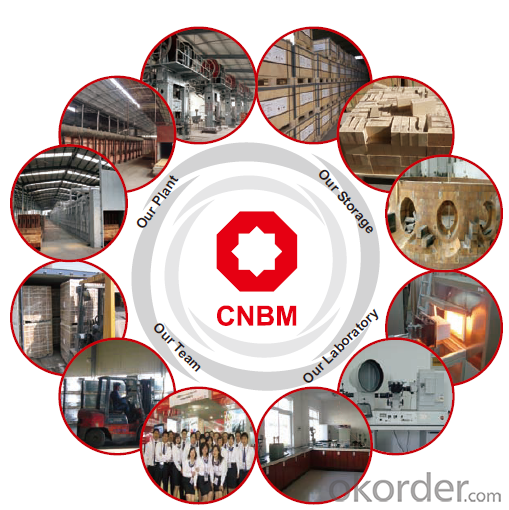
Why choose CMAX?
High puriy material make sure high max working temperature,
Tight tolerance make sure the right installation.
Large quantity in stock ensured fast delivery.
Large capacity reduce materical prices.
Our service :
Inquiry response: Your inquiries will be replied in 24 hours.
Sample support: Two free samples are available in 3~5days.
Delivery time: Your shipment will be loaded in 15~25days.depends on quantity.
Payment term: T/T, L/C, Western Union (Sample only)
We can supply the products according to customer's drawings, samples and performance requirement.
Other Products
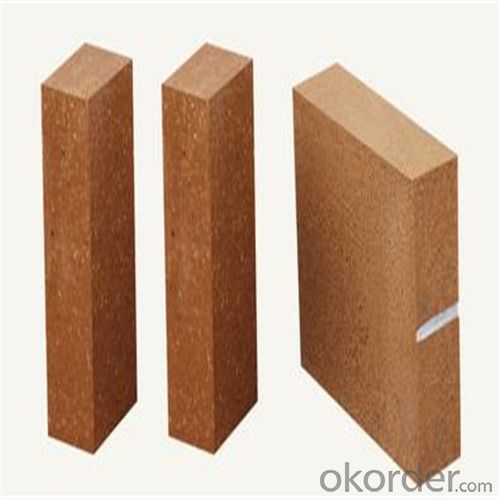
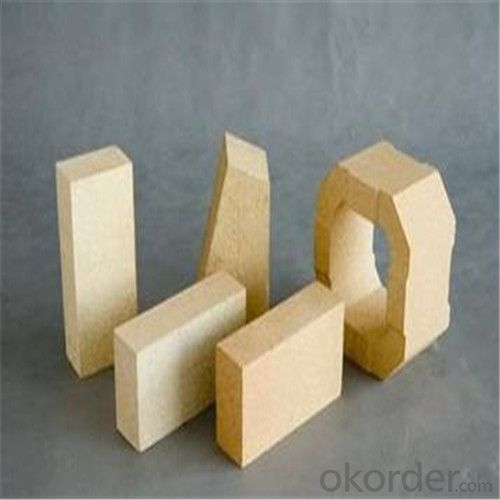
FAQ
1.What's your MOQ?
We will indicate the MOQ for each item in the quotation list. We accept the sample and trail order.
2.Can I negotiate the Prices?
Sure, we may consider discounts for bulk order of products.
3.How long will it take to complete my order?
For the stock items, we can arrange the shippment within 2~3days after received your payment. For the customized items, we will indicate the delivery time in the quotation list.
4.Can you give warranty of your products?
Yes, we extend a 100% satifisfaction guarantee on all items. Please feel free to provide timely feedback if you're not satisfied with N&D's Quality and Service. For the overseas orders, if there is a quality problem, please kindly to provide the picturers to show the problem by e-mail. We will provide the replacements to you at our cost according to actual conditions.
Welcome to visit our factory.^_^
- Q: Can a graphite crucible be used for melting carbon-based materials?
- Yes, a graphite crucible can be used for melting carbon-based materials. Graphite is an excellent conductor of heat and has a high melting point, making it suitable for high-temperature applications like melting carbon-based materials. Additionally, graphite crucibles have good chemical resistance to withstand the corrosive nature of carbon-based materials during the melting process.
- Q: How to select and use the carbon graphite for machinery? What items should we pay attention to?
- Selection must be based on the working conditions of the equipment, taking into account the pressure, wire speed, medium, and grinding materials and other factors, if necessary, after the test selected appropriate.
- Q: The graphite boat loading and loading real real graphite boat is what?
- Main features:1, can make accurate Shi Mozhou bearing loading vehicle positioning;2 、 made of stainless steel, the structure of the whole machine is firm and reliable;3 、 adopt GK series high efficiency air filter 3;4, PECVD carrier car inside, can tilt 15 degrees or rotate 180 degrees;5 、 purification fan noise is less than 50dB.6, to ensure that the work area to achieve the requirements of cleanliness 100.
- Q: You solved it. What happens if a quartz crucible is coated with a graphite crucible?
- It doesn't work, but it just adds heat resistance. You get a pretty bad heating effect when you put things in. Of course, if you put it very, very tight, the graphite crucible may crack when heated.
- Q: I'd like to smelt 104 aluminium alloy by medium frequency furnace. What should I pay attention to? Please point it out, thank you!
- I can not decide which is good. I just want to talk about the smelting methods of some nonferrous alloys of my own experience. (1) casting, casting, tin bronze, 5-5-5, fused magnesia, medium frequency furnace smelting. Carbon contamination of aluminum alloy and copper alloy
- Q: Can graphite crucibles be used for metal powder sintering?
- Yes, graphite crucibles can be used for metal powder sintering. Graphite crucibles are often preferred for sintering because they have excellent thermal conductivity and can withstand high temperatures. Additionally, graphite crucibles do not react with most metals, making them suitable for sintering various types of metal powders.
- Q: How do you determine the appropriate crucible insulation for a specific application?
- When considering the appropriate crucible insulation for a specific application, several factors come into play. First and foremost, it is crucial to understand the temperature needs of the application. Different materials have different temperature limits, so it is important to choose an insulation material that can withstand the desired temperature range. For high-temperature applications, materials like ceramic fiber or refractory bricks may be suitable, while for lower temperatures, materials like vermiculite or perlite could be used. In addition, the thermal conductivity of the insulation material should be taken into account. Lower thermal conductivity ensures better heat retention and insulation capabilities. Therefore, insulation materials with low thermal conductivity, such as ceramic fiber or refractory bricks, are often preferred for applications where efficient heat retention and control are necessary. The physical properties of the insulation material also play a significant role. Factors like density, compressive strength, and resistance to thermal shock need to be considered. A denser material may provide better insulation, but it could also be heavier and more challenging to handle. Compressive strength is crucial if the crucible will be subjected to pressure or loads. Additionally, resistance to thermal shock is essential if the crucible will undergo rapid temperature changes. Furthermore, it is important to evaluate the compatibility of the insulation material with the substance being processed in the crucible. Some materials may react or corrode when in contact with certain chemicals or metals, which could compromise the integrity of the crucible. Therefore, selecting an insulation material that is chemically inert and resistant to the substances being handled is essential. Lastly, cost and availability should be taken into consideration. Some insulation materials may be more expensive or harder to source than others. Therefore, finding a balance between the desired properties and budgetary constraints is essential. Overall, determining the appropriate crucible insulation for a specific application requires a comprehensive evaluation of temperature requirements, thermal conductivity, physical properties, compatibility, and cost considerations. Seeking advice from experts or conducting thorough research can be beneficial in selecting the most suitable insulation material for a given application.
- Q: Can graphite crucibles be used for plasma arc melting?
- Graphite crucibles prove useful in plasma arc melting as they possess high thermal conductivity and resistance to high temperatures. This makes them suitable for a range of high-temperature applications. Given that plasma arc melting involves the use of an electric arc to create and sustain a plasma state, it necessitates a crucible capable of enduring the intense heat generated throughout the process. Graphite crucibles excel in this regard, as they can withstand these extreme temperatures and serve as a stable and durable container for the resulting molten material. Moreover, graphite crucibles exhibit commendable chemical resistance, enabling them to handle corrosive substances that may arise during plasma arc melting. In summary, graphite crucibles remain a prevalent and effective choice for plasma arc melting applications.
- Q: Can graphite crucibles be used for melting rare earth metals?
- Melting rare earth metals is possible using graphite crucibles. Graphite possesses desirable qualities like a high melting point, excellent thermal conductivity, and resistance to chemical reactions. These properties make graphite an ideal material for applications that involve high temperatures, such as melting rare earth metals. Moreover, graphite crucibles are durable and can endure the harsh conditions associated with molten metals. This makes them a suitable choice for the melting and refining of rare earth metals. Nevertheless, it is crucial to acknowledge that certain rare earth metals, like cerium, can react with graphite when exposed to high temperatures. This can lead to the formation of carbonates. Hence, it is advisable to carefully consider the specific properties and reactivity of each rare earth metal before employing graphite crucibles for the purpose of melting.
- Q: Can quartz ceramic crucibles instead of graphite crucibles?
- Graphite heat resistance is much higher than that of quartz ceramics; graphite can be more than 2000, while the highest resistant quartz ceramics 1700 degrees.
Send your message to us
High-Quality Crucible Graphite Metallurgy SIC Crucibles
- Loading Port:
- Shanghai
- Payment Terms:
- TT OR LC
- Min Order Qty:
- 1 pc
- Supply Capability:
- 1000 pc/month
OKorder Service Pledge
OKorder Financial Service
Similar products
Hot products
Hot Searches
Related keywords
